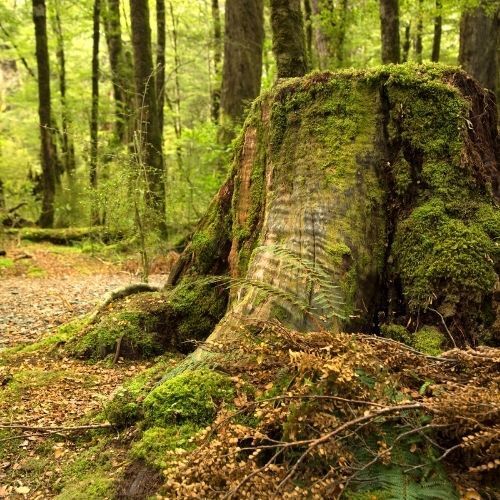The Essential Guide to Tree Preservation Orders in Leicester
Introduction: Tree Preservation Orders
In an era where urban development often takes precedence, tree preservation orders (TPOs) are vital legal protections for our leafy friends. TPOs might sound like bureaucratic jargon, but for anyone passionate about safeguarding the beauty and biodiversity of our neighbourhoods, they're something to celebrate. Whether you're a homeowner, a developer, or someone who cherishes the whispering canopies in your locality, understanding TPOs can empower you to contribute positively to your environment. Let's dive into the world of TPOs, exploring their importance, implications, and how they might affect your property plans.
What are Tree Preservation Orders?
A Tree Preservation Order is a legislation enacted by local planning authorities in many countries to protect specific trees, groups of trees, or woodlands that contribute significantly to the local environment and aesthetics. The order makes it illegal to cut down, top, lop, uproot, willfully damage, or destroy a tree without the council's permission, with penalties for non-compliance.
But why all this fuss about trees? Beyond their obvious beauty, trees play a crucial environmental role in combating climate change by absorbing CO2, offering habitats for wildlife, reducing urban heat, and even enhancing property values. TPOs are thus not just about protecting trees but about preserving community well-being and environmental health.
How Do TPOs Work?
When a tree is subject to a TPO, any work affecting it requires permission from the local planning authority. This process involves submitting an application detailing the proposed work and its justification. The authority will consider the tree's amenity value, health, and environmental contribution before making a decision. Public interest and the tree's condition are significant factors in this process, ensuring that decisions balance human needs with ecological preservation.
It's important to note that not all trees are covered by TPOs. Generally, TPOs target trees with significant visual, cultural, or environmental benefits. The specifics can vary by locality, so it's wise to check with your local council if you're unsure whether a tree on your property or in your area is protected.
Navigating TPOs for Property Owners and Buyers
For prospective home buyers and current property owners, TPOs present unique considerations. Here's how you can navigate these orders smartly and responsibly:
- Due Diligence: Before purchasing a property, ascertain whether any TPOs apply. This information can usually be found in property reports or by contacting the local council. Knowing this can help you understand future limitations or responsibilities regarding the property's trees.
- Planning Permissions: Early engagement with the local planning authority is crucial if you're considering development work that might affect a protected tree. They can provide guidance on whether your plans are likely to be approved and how to submit a successful application.
- Professional Advice: Consulting with an arboriculturist or a tree surgeon can be invaluable. These professionals can assess the health of protected trees and recommend maintenance or work that aligns with your needs and legal requirements.
- Appealing Decisions: If permission to work on a protected tree is denied, there are usually avenues for appeal. Understanding these processes can help you make a compelling case or adjust your plans to meet regulatory standards.
The Bigger Picture: Community and Environmental Benefits
TPOs do more than protect individual trees; they help foster greener, healthier communities. By ensuring that vital natural landmarks and wildlife habitats are preserved, TPOs contribute to the overall quality of life. They remind us that nature has invaluable worth that merits protection in our fast-paced, development-driven world.
Moreover, local actions like adhering to and supporting TPOs can impact global environmental challenges. They're a practical step towards more sustainable living, demonstrating a commitment to preserving the planet for future generations.
Getting Involved
Beyond understanding and complying with TPOs, there are several ways you can get more involved:
- Community Engagement: Participate in local tree planting or conservation initiatives. Engaging with your community can also help identify trees that benefit from TPO protection.
- Advocacy: Support or initiate campaigns for more extensive tree protection policies. This could involve lobbying for more significant green spaces or stricter regulations against unnecessary tree removal.
- Education: Spread awareness about the importance of trees and TPOs. Educating others, especially the younger generation, about environmental stewardship ensures a lasting conservation legacy.
Conclusion: A Call to Action
Tree Preservation Orders are a testament to the value we place on our natural heritage. They invite us to view trees as part of the landscape and as essential components of our community's health, biodiversity, and well-being. As property owners, buyers, or citizens who enjoy a walk under the shade of towering oaks, we all have a role in upholding these protections.
By staying informed and engaging with your local Tree surgeons JC Leicester communities, and advocating for our leafy allies, we can ensure that the benefits trees offer are preserved for years to come. So, the next time you admire a particularly majestic tree, remember that TPOs might be what's keeping it safe and sound—protecting our green canopies, one order at a time.
For more expert advice on TPO's and how we can help you, contact us at Tree Surgeons JC Leicester 0116 4788169
You might also like


